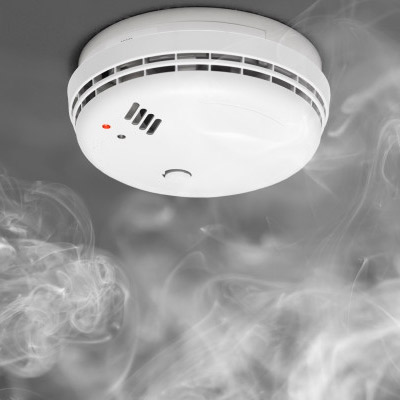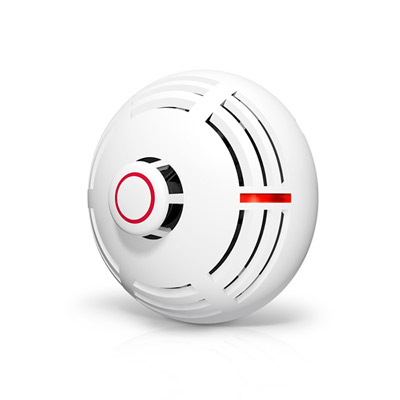We dispel doubts
Smoke and heat detectors are key elements of fire protection systems. They allow for rapid detection of fire and appropriate action to be taken. But how exactly do these devices work? In this article, we dispel any doubts on the subject.
Smoke detectors
A smoke detector is a device that detects the presence of smoke in the air. Smoke is one of the first signs of fire, so detecting it quickly is crucial for safety. There are different types of smoke detectors, but the most popular are optical and ionization detectors.
Optical sensors, also known as photoelectric sensors, operate on the principle of light scattering. The sensor contains a light source and a photodiode that responds to changes in light intensity. When smoke appears in the air, the smoke particles scatter the light, which is detected by the photodiode.
Ionization sensors on the other hand, use a radioactive isotope that ionizes the air in the sensor, creating an electrical current. When smoke particles are present in the air, they disrupt the current, which is detected by the sensor. Both types of sensors are effective, but have different applications.
Optical sensors are better at detecting smoke from a smoldering fire, while ionization sensors are more effective at detecting smoke from a burning fire.

Heat sensors
Heat sensors, also known as temperature detectors, operate on the principle of detecting an increase in temperature. There are different types of heat sensors, but the thermistor and thermocell sensors are the most popular.
Thermistor sensors use a thermistor, a resistor whose resistance changes with temperature. As the temperature increases, the thermistor’s resistance changes, which is detected by the sensor.
Thermocell sensors on the other hand use two different metals that are connected together. As the temperature increases, the metals expand at different rates, which creates a voltage. This voltage is detected by the sensor.
As with smoke detectors, different types of heat detectors have different applications. Thermistor detectors are more sensitive to small changes in temperature, while thermocell detectors are more effective at detecting rapid increases in temperature, such as occur in a fire.

Smoke and Heat Detectors Comparison
Both smoke and heat detectors are key to fire safety. The choice between them depends on many factors, such as the type of facility, the type of potential fire and the resources available.
Smoke detectors are usually more sensitive and can detect fires more quickly, especially when they are still in their early stages. However, they are more susceptible to false alarms, such as those caused by burning food in the kitchen.
Heat sensors are usually less sensitive, but are less prone to false alarms. They are particularly effective in places where there is a risk of rapid temperature increases, such as garages or workshops.
Summary
Smoke and heat detectors are key elements of fire protection systems. They enable rapid detection of fire and appropriate action to be taken. The choice between them depends on many factors, such as the type of facility, the type of potential fire and the resources available. In each case, it is crucial to properly install and maintain these devices so that they can effectively perform their role.
Understanding how smoke and heat detectors work is essential to the proper selection and application of these devices. Both types of detectors have their advantages and limitations, and their effectiveness depends on many factors. Therefore, the decision to select a specific type of detector should always be preceded by thorough analysis and consultation with experts in the field of fire protection.
In summary, both smoke and heat detectors are essential elements of fire protection systems. Thanks to them, it is possible to quickly detect a fire and take appropriate measures, which can significantly reduce damage and ensure the safety of people. In an era of increasing fires and increasing safety requirements, the correct selection and use of these devices is crucial.
